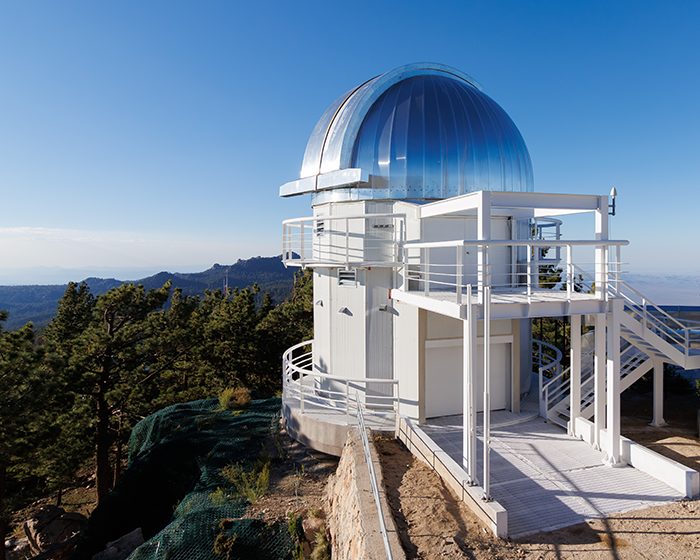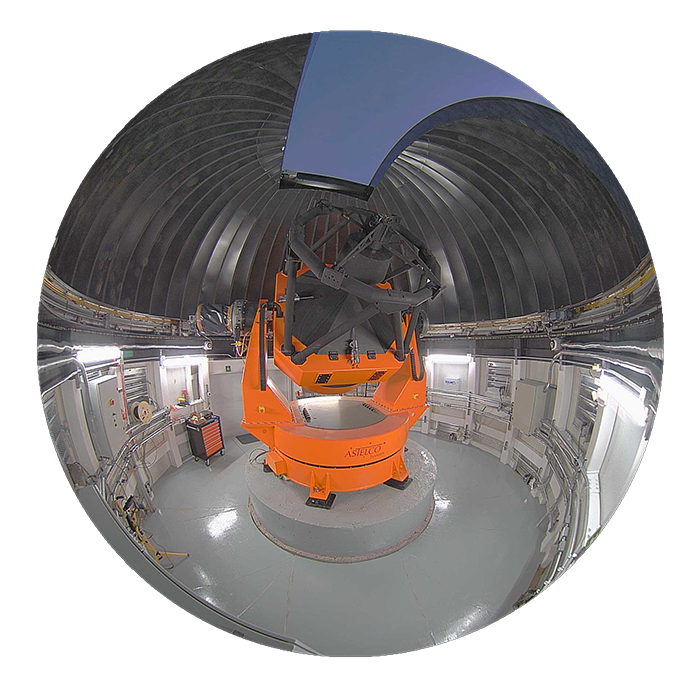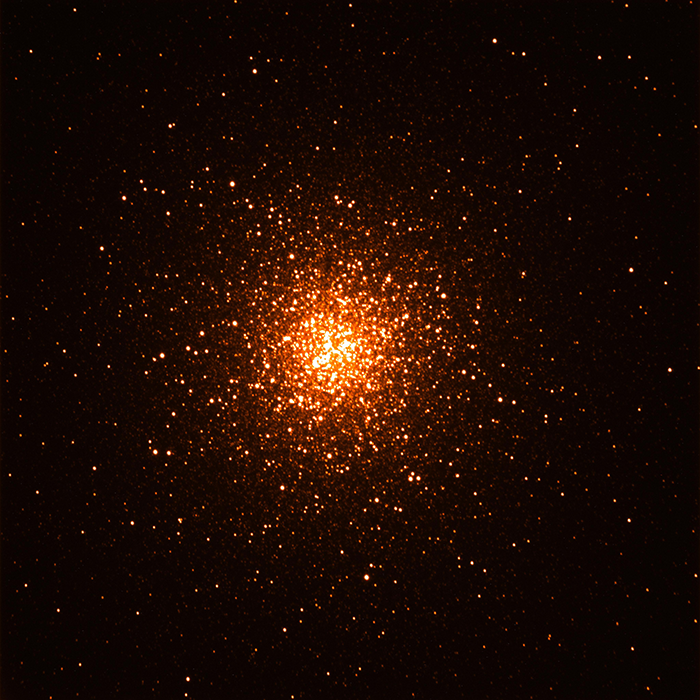
First light for COLIBRI, an outstandingly fast ground-based telescope
|
|
The COLIBRI ground-based telescope unveiled its first images at its inauguration on September 7, 2024 at the San Pedro Mártir National Astronomical Observatory, Mexico. Designed as part of the SVOM space mission, the outstandingly fast telescope will be able to detect gamma-ray bursts, as well as other transient astronomical phenomena. Overseen by CNRS scientists, the project is the result of close collaboration between France and Mexico, and is supported by the CNRS, the French space agency CNES, Aix-Marseille University, the National Autonomous University of Mexico (UNAM), and Mexico's National Council of Science and Technology.
The COLIBRI ground-based telescope has the remarkable ability to detect and record random flashes of light in the sky lasting just a few seconds. Designed as part of the SVOM1 space mission, whose goal is to identify and investigate gamma-ray bursts, this unique instrument, the only one of its kind in the world, will help astrophysicists to attempt to answer a host of questions relating to the study of transient astronomical phenomena,2 (such as the identification of the astrophysical objects at the origin of gravitational waves, and the sources of high-energy cosmic neutrinos), as well as helping them to understand the early Universe (in particular the identification of the first generation of stars and the study of the first galaxies).
Standing four metres high and weighing eight tonnes, COLIBRI can be pointed at any region of the sky in under 20 seconds. It is equipped with a 1.30 metre mirror and three cameras for simultaneous observations in the visible and infrared range. This robotic telescope carries out observations and surveys without human intervention, using an observation programme, thus further increasing its responsiveness and lowering operating costs.
Around 120 people were involved in the work of developping the COLIBRI telescope, which began in 2016 and was led by scientists from the Marseille Astrophysics Laboratory (Aix-Marseille Université/CNES/CNRS) and the Institut Pythéas (Aix-Marseille Université/CNRS/INRAE/IRD) as well as the UNAM Astronomy Institute. Scientists at the Centre de Physique des Particules de Marseille (Aix-Marseille Université/CNRS) and the Institut de Recherche en Astrophysique et Planétologie (CNES/CNRS/Université Toulouse III – Paul Sabatier) also took part in the project3 . To date, COLIBRI is the only astrophysics research facility jointly run by France and Mexico, and follows on from a long tradition of collaboration between the two countries, recently consolidated in the form of an International Research Project4 .
The telescope was fully assembled at the Observatoire de Haute-Provence and its performance tested through field trial for over a year before being shipped to Mexico. COLIBRI is installed at the San Pedro Mártir National Astronomical Observatory, Mexico, where it was inaugurated on September 7 and delivered its first images.

©COLIBRI&A. Watson, UNAM

© COLIBRI&A. Watson, UNAM

©COLIBRI&A. Watson, UNAM
- 1The French-Chinese space mission SVOM, which mainly focuses on detecting and studying the most distant explosions or mergers of stars, known as gamma-ray bursts, was successfully launched on June 22, 2024 by a Chinese Long March 2C launcher from the Xichang launch complex in China. Planned to last at least three years, it is the result of a collaboration between the two national space agencies, the China National Space Administration (CNSA) and the Centre National d'Études Spatiales (CNES), with major contributions from France's CEA and CNRS.
- 2Transient astronomical phenomena are short-lived events on the cosmic time scale, lasting from a few seconds to a few hours. They are associated with powerful cosmic explosions, sources of valuable information about the history of the Universe and the objects that make it up. This is why the astronomy of transient phenomena is currently a priority for the French and international scientific communities.
- 3The project was also supported by France's Alternative Energies and Atomic Energy Commission CEA.
- 4An International Research Project (IRP) is a collaborative research facility between one or more CNRS laboratories in France and one or two laboratories in other countries. Its aim is to reinforce an already established international research project by simplifying administrative procedures between partners in France and in other countries.


